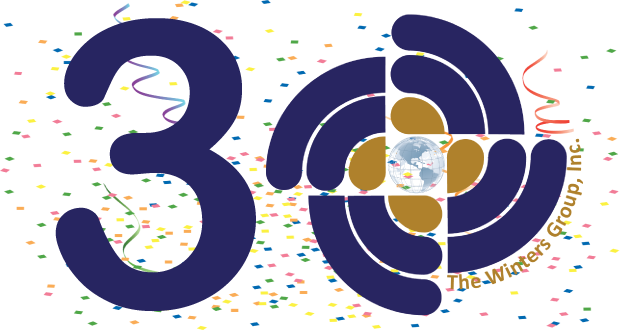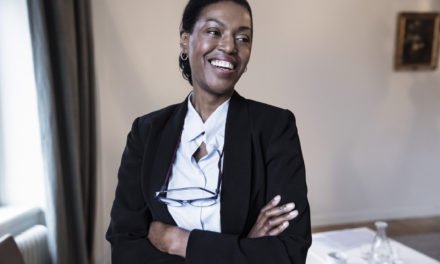
There is a reason many people choose to build their physical fitness in the wintertime: so that they can be prepared for the summer. Some people choose to stay inside away from the cold, while others stay inside because there aren’t as many activities and events. This is the perfect time for meeting personal goals like eating healthier, reading more books, learning to meditate or do yoga, developing a nighttime or morning routine, or even hosting more of your own events.
At this point, you are wondering what this has to do with a diversity, equity, inclusion, and justice (DEIJ) blog? This week’s post is about taking this same example and principle and applying it to DEIJ in the workplace.
One of the most important times to create, build up, and implement DEIJ strategy and practices is when it is “unpopular” because of the sociopolitical environment … or because other organizations are not doing it. Consider how athletes train even harder in the off season to prepare for their actual season games. An athlete that puts in the work and practice outside of actual game time will have an advantage because they are well-prepared and have built positive habits.
Organizations need to follow this same model in order to be successful in their DEIJ strategies. Nothing in the DEIJ field comes naturally, as it is all derivative of experience and practice. Just like any sport, fitness goal, or academic aspiration, the proper amount of researching, studying, and practicing needs to be put in on a consistent basis. While cultural competence begins with our experiences and environment, the skills we need to expand our cultural competence are learned and built through education and having difficult conversations.
Four Reasons Why DEIJ Efforts Can Be More Effective and Successful When Worked on Proactively and Consistently
1. More Time to Communicate Efficiently, Effectively, and with Empathy
Oftentimes when we’re given a reason to speak up about something inequitable that has occurred, there is an expectation to respond quickly. Quick responses then open up opportunity for missteps when it comes to a sensitive topic because there was only time to respond on a superficial level.
Properly strategizing in advance allows for organizations to consider their viewpoints and stances on different areas of diversity and equity and also find ways to be more inclusive in who is sharing their perspective and making decisions. Taking time to get more feedback from employees helps to offer a better understanding when it comes time to put out communication or statements about things that could be directly impacting those same employees. Ultimately, this creates room for more empathetic responses.
2. Opportunity to Ignore the Sense of Urgency
Trying to find a quick fix in DEIJ is like putting a Band-Aid on a wound that needed stitches and time to heal. The journey toward understanding our own identity and adapting to new cultures takes time and strategy. There is not an immediate solution or a shortcut to creating a diverse culture that people of different genders, races, ages, sizes, abilities, and more want to be a part of. A work environment that does not consider all these identities and intersectional experiences will often result in high turnover because people are being hired into an environment that is not conducive for success and high performance.
There are methods to improve workplace culture, but they require time to gain a full understanding of the community and audience the organization serves, the DEIJ opportunity areas in leadership and individual contributor roles, and the ideal candidates to fill opportunity roles. Only after putting in the time to do this will an organization be able to avoid the negative results that come with the systemic norm of urgency. They will instead find higher rates of success in their efforts because they have put in the proper time and resources.
3. Easier to Determine and Build Budget and Capacity
Fiscal budgets are often determined a year in advance. I can’t tell you the number of times a developmental and strategic approach to DEIJ has been turned down simply because it was not factored into the budget. What was considered was a one-time session no longer than two hours because budget and time were not allotted. DEIJ initiatives, like any other budgeted initiatives, should be considered in advance and based on a long-term commitment.
To know what is necessary in this long-term commitment, organizations need internal and/or external trained personnel to give recommendations and share what it really takes to successfully work toward equity and justice. The best time to hire personnel and receive recommendations is well in advance to ensure ample time for consideration and development of a plan.
4. Take the Lead in Your Industry Versus Competing Against Benchmarks
So many organizations have asked if The Winters Group provides benchmarks for what other organizations are doing in their respective field as it relates to DEIJ. While we understand the importance of competitor analysis, we always share the same answer that the true benchmarks are based on where their own organization has been, where they are, and where they want to go. Truthfully, there are not many examples of organizations putting in the long-term time and resources necessary to dismantle a history of injustices in their systems. This means that when organizations are benchmarking against other organizations, they are not really being held to a high standard considering the low bar being set. The worst mindset an organization can have is to feel that the work is done because they are already doing what a direct competitor may be doing or a little more.
We are in a time when the U.S. Supreme Court and legislators are directly targeting DEIJ initiatives, especially related to race. In Racial Justice at Work: Practical Solutions for Systemic Change, I authored a chapter titled “Closed Mouths Don’t Get Justice” and shared the importance of practicing scenarios and conversations that may very likely come up based on the events that have already occurred in our society, and most likely will occur again in another shape or form. I share that silence is comfortable and oftentimes safe, but the only way we make speaking up for ourselves and others just as comfortable is by intentional practice. This practice uses our history and current sociopolitical environment as a learning opportunity and allows us to prepare for unforeseen future events just by choosing to increase cultural competence and seeking out opportunities to have difficult conversations — even when no one is looking or asking you to do it.
Three years is all it took to move on from the company commitments that were made after the murder of George Floyd. Things have not changed, meaning unfortunately there will be more injustices to prepare for surrounding race, ability, age, gender, size, nationality, or other intersectional aspects of identity and difference. Will you and your organization be prepared? What are you going to do now and what habit are you going to build during this “off season”?


















